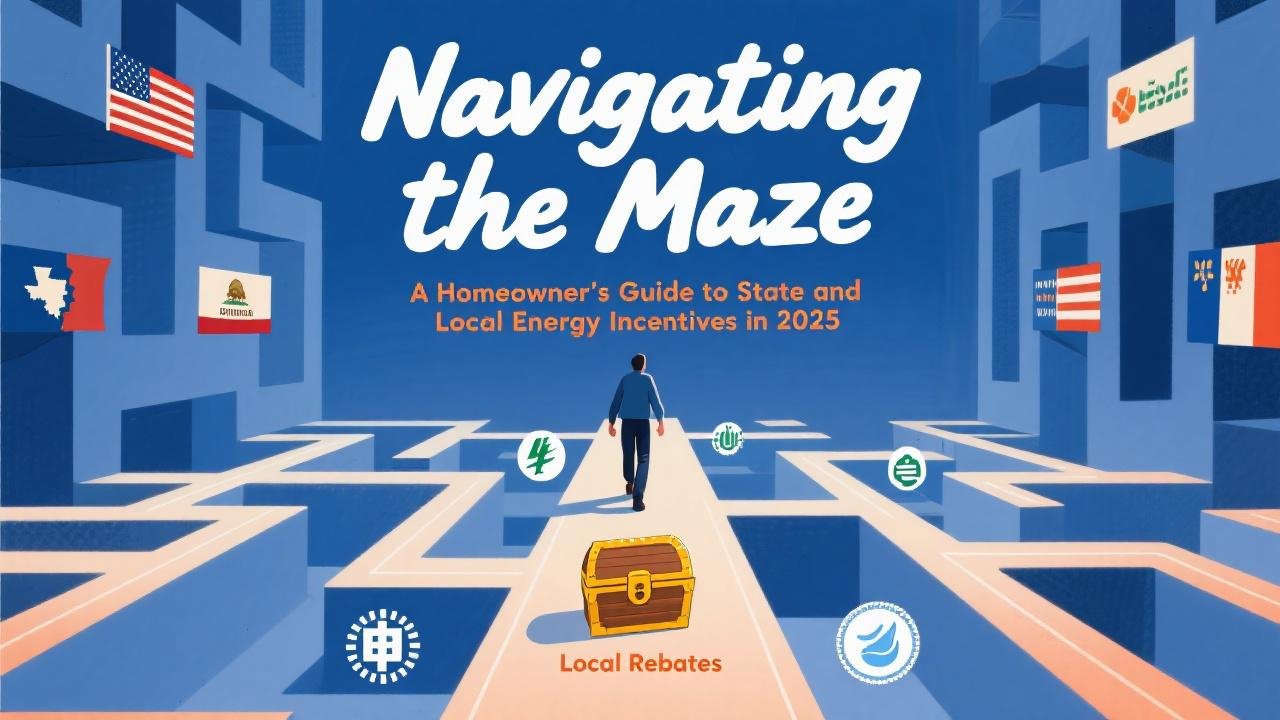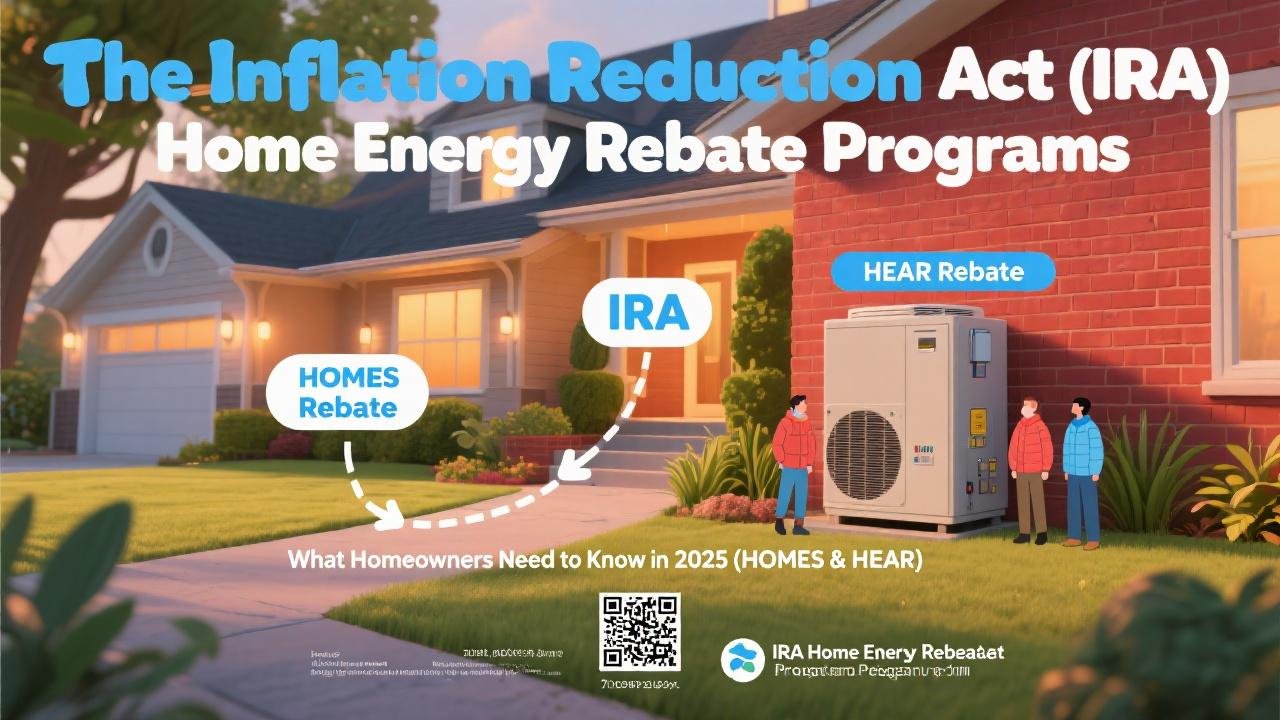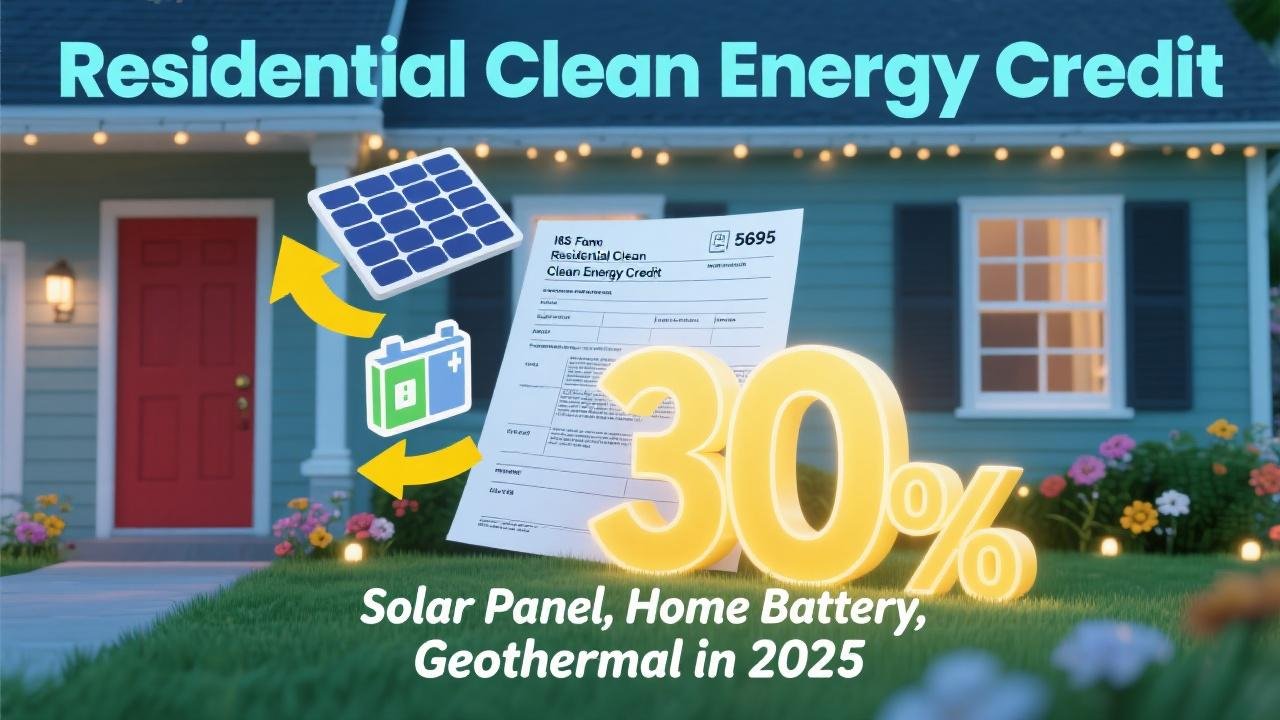Beyond Federal Aid – Uncovering Local Energy Savings
While federal tax credits provide a significant boost for homeowners investing in energy efficiency and renewable energy in 2025, the savings don’t have to stop there! Many states, local governments, and utility companies offer their own array of incentives, including rebates, grants, tax breaks, and special financing programs. These localized programs can be layered on top of federal incentives, further reducing the cost of your home energy upgrades and making projects like solar panel installations, heat pump upgrades, or insulation improvements even more financially attractive. This guide will help you understand how to find and navigate these valuable state and local energy incentives.
Why State and Local Incentives Matter:
- Enhanced Affordability: These programs can provide direct cash rebates or additional tax relief, making energy upgrades more accessible to a wider range of homeowners.
- Targeted Solutions: Local incentives are often tailored to the specific energy challenges, resources, and policy goals of a particular region (e.g., promoting solar in sunny states or specific efficiency measures in colder climates).
- Increased ROI: By further lowering the net cost of your project, state and local incentives can shorten the payback period and increase the overall return on your investment.
- Support for Specific Technologies: Some programs may specifically target emerging technologies or those that provide particular grid benefits.
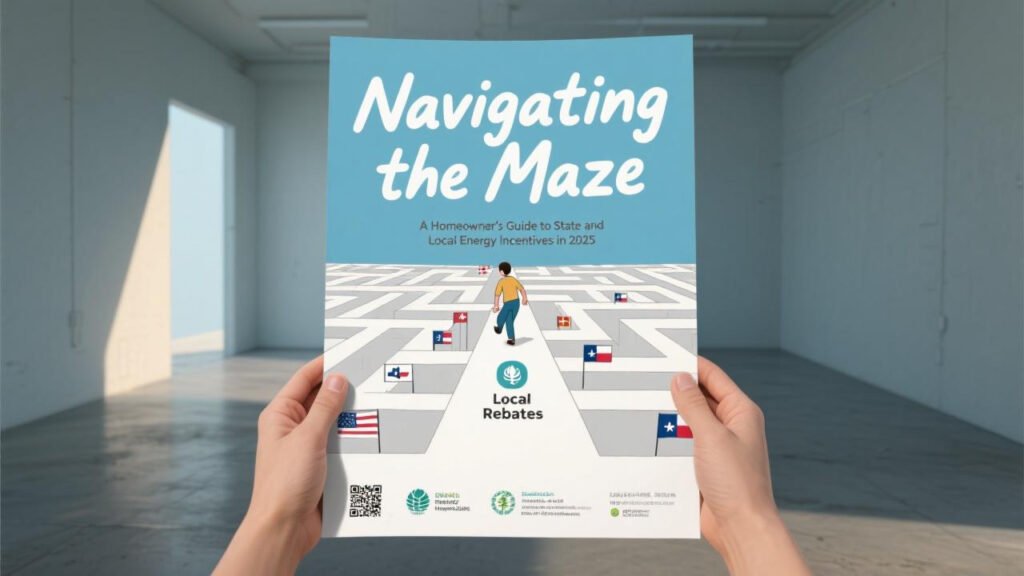
Types of State and Local Incentives You Might Find in 2025:
The landscape of incentives varies greatly, but common types include :
- Rebate Programs:
- What They Are: Direct cash payments or discounts offered after the purchase and installation of qualifying energy-efficient equipment or renewable energy systems.
- Examples: Rebates for ENERGY STAR certified heat pumps, heat pump water heaters, smart thermostats, insulation, or solar panel systems.
- Administered By: State energy offices, local municipalities, or utility companies.
- State Tax Credits or Deductions:
- What They Are: Similar to federal tax credits, some states offer credits or deductions on your state income tax for eligible energy upgrades.
- Example: A state might offer an additional percentage-based credit for solar installations on top of the federal ITC. New York, for instance, offers a 25% state tax credit (up to $5,000) for solar and geothermal systems.
- Property Tax Incentives:
- What They Are: Exemptions or assessments that prevent your property taxes from increasing due to the added value of a renewable energy system (like solar panels) or other qualifying energy improvements.
- Example: Texas offers a property tax exemption for solar systems, meaning your property taxes won’t go up because you installed solar. California has a similar property tax exclusion for solar energy systems.
- Sales Tax Exemptions or Reductions:
- What They Are: Some states or localities may offer exemptions or reduced sales tax rates on the purchase of qualifying energy-efficient equipment or renewable energy systems.
- Loan Programs and Green Financing:
- What They Are: Low-interest loans, Property Assessed Clean Energy (PACE) financing (where the loan is repaid via property taxes), or other favorable financing options specifically for energy upgrades.
- Performance-Based Incentives (PBIs) or Renewable Energy Credits (RECs):
- What They Are: Payments based on the actual amount of clean energy your system produces (e.g., Solar Renewable Energy Credits – SRECs). These are more common for solar PV systems.
- Net Metering / Net Billing Policies:
- What They Are: While not a direct upfront incentive, favorable net metering or net billing policies established by your state or utility are crucial for the financial viability of rooftop solar. These policies determine how you are credited for excess solar energy sent back to the grid. Policies vary widely by state.
- Utility-Specific Programs:
- Beyond general rebates, utilities often have unique programs, such as discounts for smart thermostats that participate in demand response events, or special rates for EV charging.
How to Find State and Local Incentives in 2025:
Navigating the multitude of programs can seem daunting, but several excellent resources can help:
- DSIRE (Database of State Incentives for Renewables & Efficiency):
- What it is: This is the most comprehensive and up-to-date national database of energy-related incentives and policies in the United States, maintained by the N.C. Clean Energy Technology Center at N.C. State University.
- How to Use: Visit dsireusa.org and use their interactive map or search functions to find policies and incentives specific to your state. You can filter by technology (e.g., solar, heat pumps, energy efficiency) and incentive type (rebate, tax credit, etc.).
- ENERGY STAR Website:
- Rebate Finder: ENERGY STAR offers a “Rebate Finder” tool where you can enter your zip code to find local rebates and special offers on ENERGY STAR certified products.
- Your State Energy Office Website:
- Most states have an official energy office or department that manages state-level energy programs and incentives. Their websites are often a primary source for program details, eligibility, and application forms. (e.g., NYSERDA in New York , SECO in Texas ).
- Your Local Utility Company’s Website:
- Check your electric and gas utility’s website. They typically have a section dedicated to energy efficiency, rebates, and programs for residential customers.
- Local Government Websites:
- Your city or county government might offer local incentives or grants.
- Qualified Contractors and Installers:
- Experienced local contractors (solar installers, HVAC professionals, energy auditors) are often knowledgeable about the incentives available in their service area and can guide you through the application process. When getting quotes for projects, ask about available incentives.
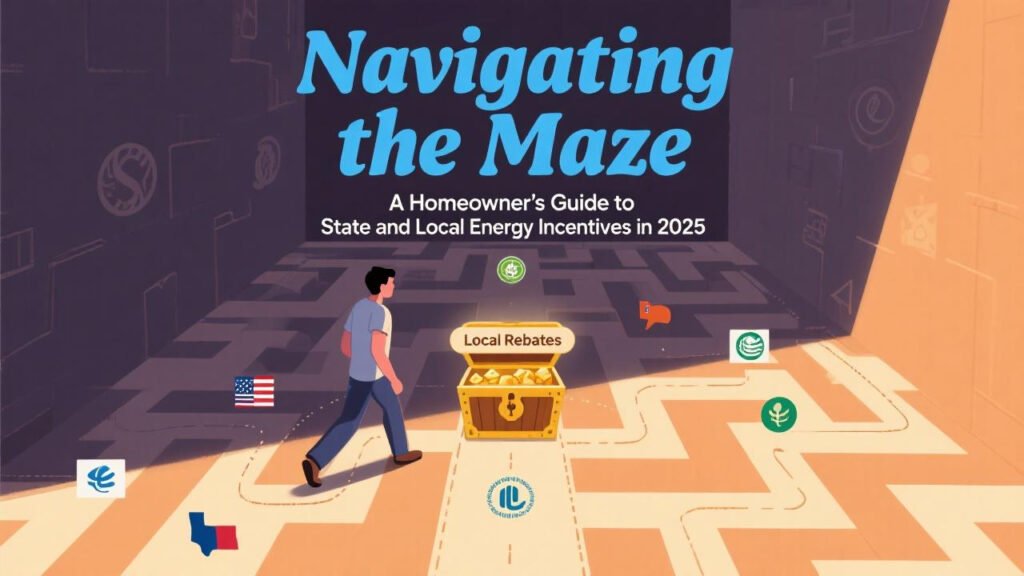
Key Considerations When Applying for Incentives:
- Eligibility Criteria: Pay extremely close attention to all requirements, including income limits (especially for IRA HEAR and HOMES rebates ), equipment efficiency standards (e.g., specific SEER2/HSPF2 ratings for heat pumps , ENERGY STAR certifications ), residency status, and installation timelines.
- Application Process and Deadlines: Some programs require pre-approval before purchase/installation, while others are post-installation rebates. Note all deadlines and required documentation carefully.
- Program Funding: Many rebate programs have limited funding and are available on a first-come, first-served basis until funds are exhausted. Apply early if possible.
- Combining Incentives (“Stacking”): Understand if and how different incentives can be combined. For example, federal tax credits can usually be combined with state/local rebates, but the rebate amount might sometimes reduce the cost basis for the federal credit.
- Documentation: Keep meticulous records of all purchases, invoices, installation contracts, photos, and certification documents.
The Inflation Reduction Act (IRA) Rebate Programs: HOMES and HEAR
A special note for 2025: The federal Home Efficiency Rebates (HOMES) and Home Electrification and Appliance Rebates (HEAR) programs, authorized by the IRA, are expected to become more widely available through State Energy Offices.
* HOMES Program: Offers rebates for whole-home energy efficiency retrofits based on energy savings achieved, with doubled rebates for LMI households.
* HEAR Program: Provides point-of-sale rebates for LMI households for specific high-efficiency electric appliances like heat pumps (up to $8,000), heat pump water heaters (up to $1,750), electric stoves (up to $840), and electrical panel/wiring upgrades.
* Status: States are actively developing and launching these programs. For example, California has initiated HEEHRA Phase I (its HEAR program) with retrofits beginning summer 2025, and Texas is targeting a 2026 launch for its programs. Check your State Energy Office and the DOE’s Home Energy Rebates portal for the latest updates and availability in your area.
Maximizing Your Savings Through Local Knowledge
While federal tax credits provide a strong foundation for making home energy upgrades more affordable, don’t overlook the wealth of incentives available at the state and local levels in 2025. By diligently researching programs through resources like DSIRE and your state energy office, and by working with knowledgeable local contractors, you can often “stack” multiple incentives to significantly reduce the net cost of your projects. This due diligence will empower you to make your home more energy-efficient, comfortable, and sustainable while keeping more money in your pocket.

